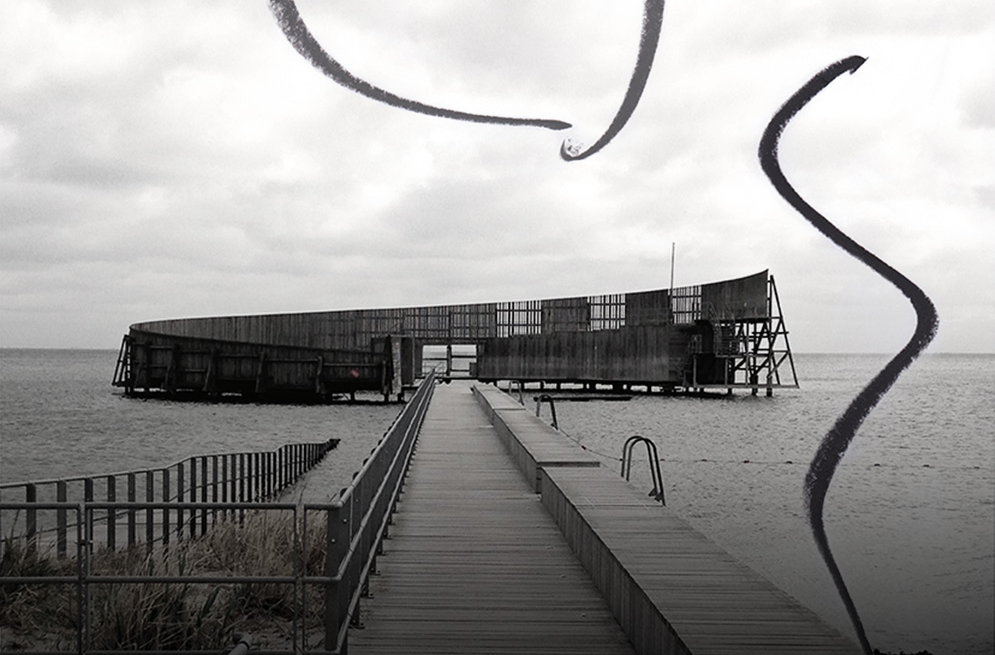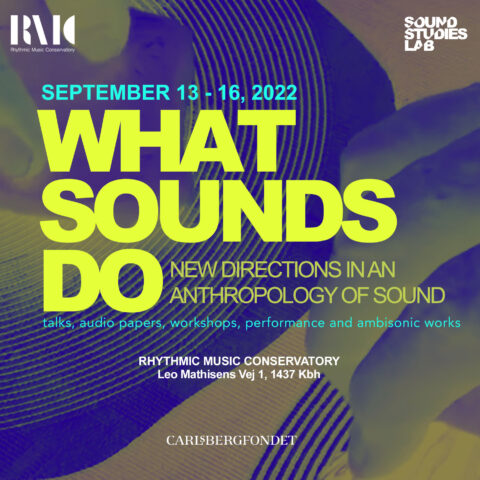
Seismograf journal has published a special issue called Fluid Sounds, dedicated to explore sound and also to propose a new format for their platform, “The Audio Paper”, whose purpose “is to extend the written academic text: to present discussions and explorations of a certain argument or problem in sound.”
The issue features 10 articles, also including a manifesto for the proposed audio paper format, which, as they state, “is an extension of expressive means: Not only words and syntax are means of expression – so are tempo, time, voice, sound and music”, valuing it as a way of merging analysis and performance in academic ways of expression. The format was previously introduced in June 2015 during Fluid Sounds event at the Performance Studies International conference.
“The aim of the conference was partly to investigate the selected sites of the immediate area (Amager Strandpark, Urbanplanen and Musiktorvet), and partly to challenge the conventional conference format with performances (in the widest sense) and by drawing from the development in recent information technologies. The aim was to work with new mediated formats taking the bodily, situated and affective modes of research into play.
By merging anthropologies of sound with site-specific performances, the conference explored new ways of investigating urban spaces and landscapes. Underlining listening, sensing and experiencing as part of research processes the Fluid Sounds conference wished to venture into artistic research practices. Or, as addressed in Holger Schulze’s opening keynote lecture, taking place at Kastrup Søbad (a.k.a. Sneglen), “Research in a specific sensory or non-sensory field requires at first a basic orientation, a sensible and maybe unconventional but always highly individual account of what is actually there: What is here, what have we now?” Schulze’s lecture was followed by two site-specific performances in Urbanplanen: Brandon LaBelle’s On the productions of a poor acoustics and Jeremy Woodruff’s Green Interactive Biofeedback Environments (GIBE). (Further analyses in Groth & Samson (2016) Sound Art Situations, forthcoming).This day of the conference ended at Teaterøen, with the performance music4gigants by Heaven.
Fluid Sounds was not only an exploration of how to gain knowledge through site-specific lectures and performance; it was also a conference with the purpose to transform academic knowledge into various aesthetic and performative formats such as site-specific sound performances, audio walks or sound installations. The audio papers were developed through workshops during the conference. As such, they serve as an academic response to questions of situations, performances and media technologies.
In Nicole De Brabandere and Graham Fletts Hearing on the Verge, a sonic landscape is engaged through recording and listening in movement. Anne Robinsonexplores songs as temporal and affective phenomena.Ben Byrne revisits the Swiss composer Manfred Werder’s work 2005 (1) and relates to the work of John Cage. Jacob Kreutzfeldt and Sandra Lori Pedersenargue that the radio studio is acoustically designed to be inaudible, but is yet ever-present as a prerequisite for voices and situations. Pedro Oliviera contributes with a speculative audio paper about the past of 2055, assessing site-specific found objects coming from a near-future. Rasmus Holmboe and Jan Stricker go into dialogue with the artist Andreas Frührer and his audio walk The Map is Not the Territory D’Or. Macon Holt and Kartine Pram explore new forms of labour expanding notions of place and work itself. And finally,Tine Blom and Alexandra Baixinho combine soundscapes from Norwegian mountains with a Danish urban waterfront.”





